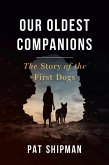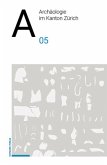History has many voices. In the words of Russian fur merchant Grigorii Shelikhov, who led the conquest of Kodiak Island, Alaska, in 1784 and sought to subjugate its indigenous Qikertarmiut population, "the arrival of the Russians in their land had brought them innumerable advantages, security, and prosperity" (Shelikhov 1981:121). Arsenti Aminak, a Qiker tarmiut elder in 1851, held a different view. He recalled a Russian ship that visited the island several years before Shelikhov as a "strange monster, never seen before, which we feared and whose stench made us sick. " In 1784, the dead of his people lay on the beach at a place called A'wauq meaning "to become numb" -where hundreds had been killed by Skeli khov's cannon and muskets (Holmberg 1985:57-59). The Russian hunters who built the Shelikhov-Golikov Company's first outpost on Kodiak Is land, at a small cove they called Gavan Trekh Svetitelei (as commonly translated, "Three Saints Harbor"), recalled their own miseries and despair: "We . . . spent the winter in ceaseless labors and . . . suffered great shortages and real famine . . . . Many contracted fever, scurvy, and other ills, and died" (Pierce 1976:75). Eyewitness statements about what happened on Kodiak Island dur ing the Russian conquest and early years of colonial rule are important, but rare. They represent the experiences and views of a few individuals who lived through a time of turbulent change and traumatic contact between disparate cultures.
`This pioneering study is well illustrated with photographs of the excavation, plans of the village, and historical illustrations of persons and the landscape. An important acquisition for academic libraries, especially where there are programs in history, anthropology, and archaeology. Upper division undergraduates and above.'
Choice, June 1998
Choice, June 1998
`This pioneering study is well illustrated with photographs of the excavation, plans of the village, and historical illustrations of persons and the landscape. An important acquisition for academic libraries, especially where there are programs in history, anthropology, and archaeology. Upper division undergraduates and above.'
Choice, June 1998
Choice, June 1998








